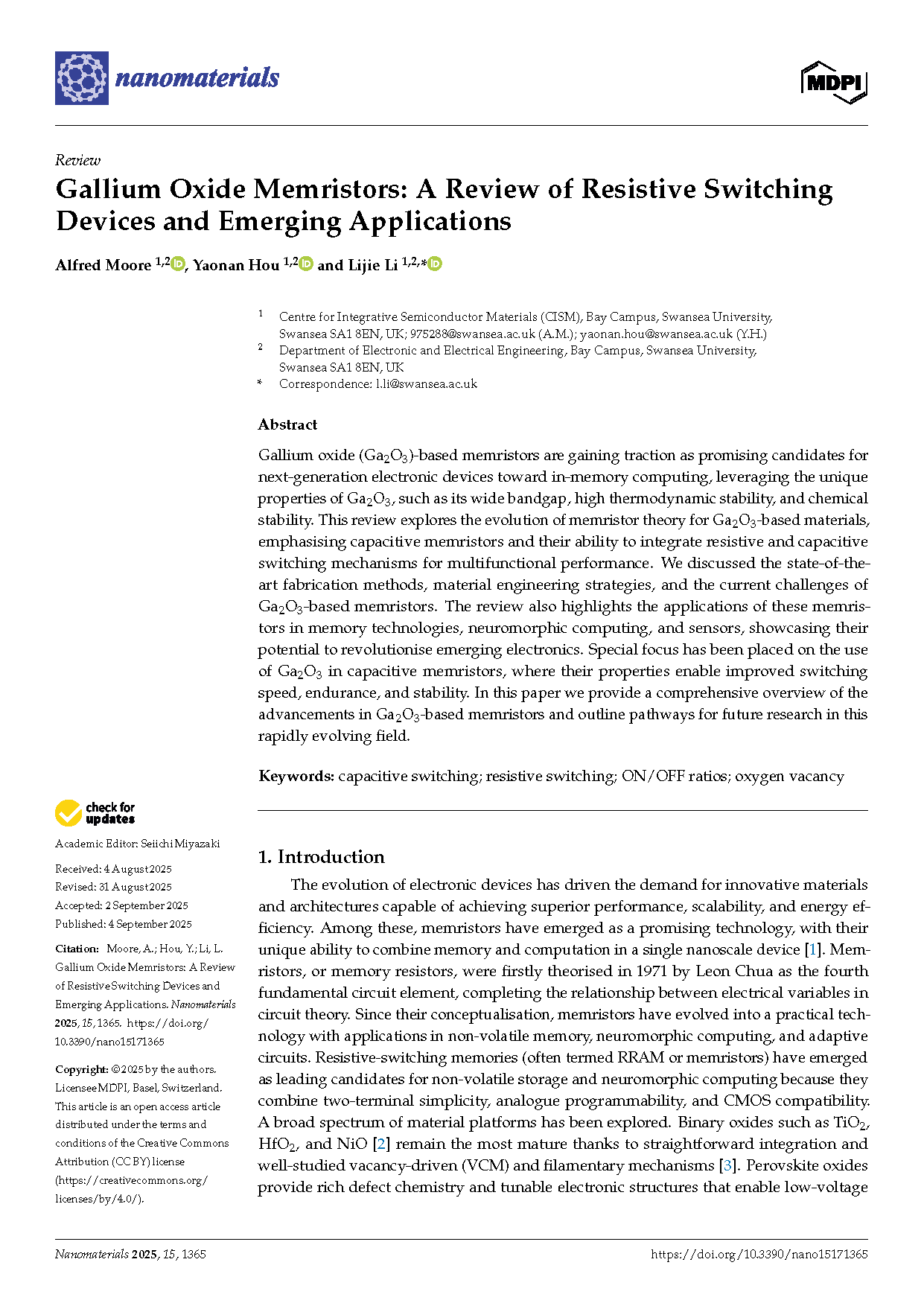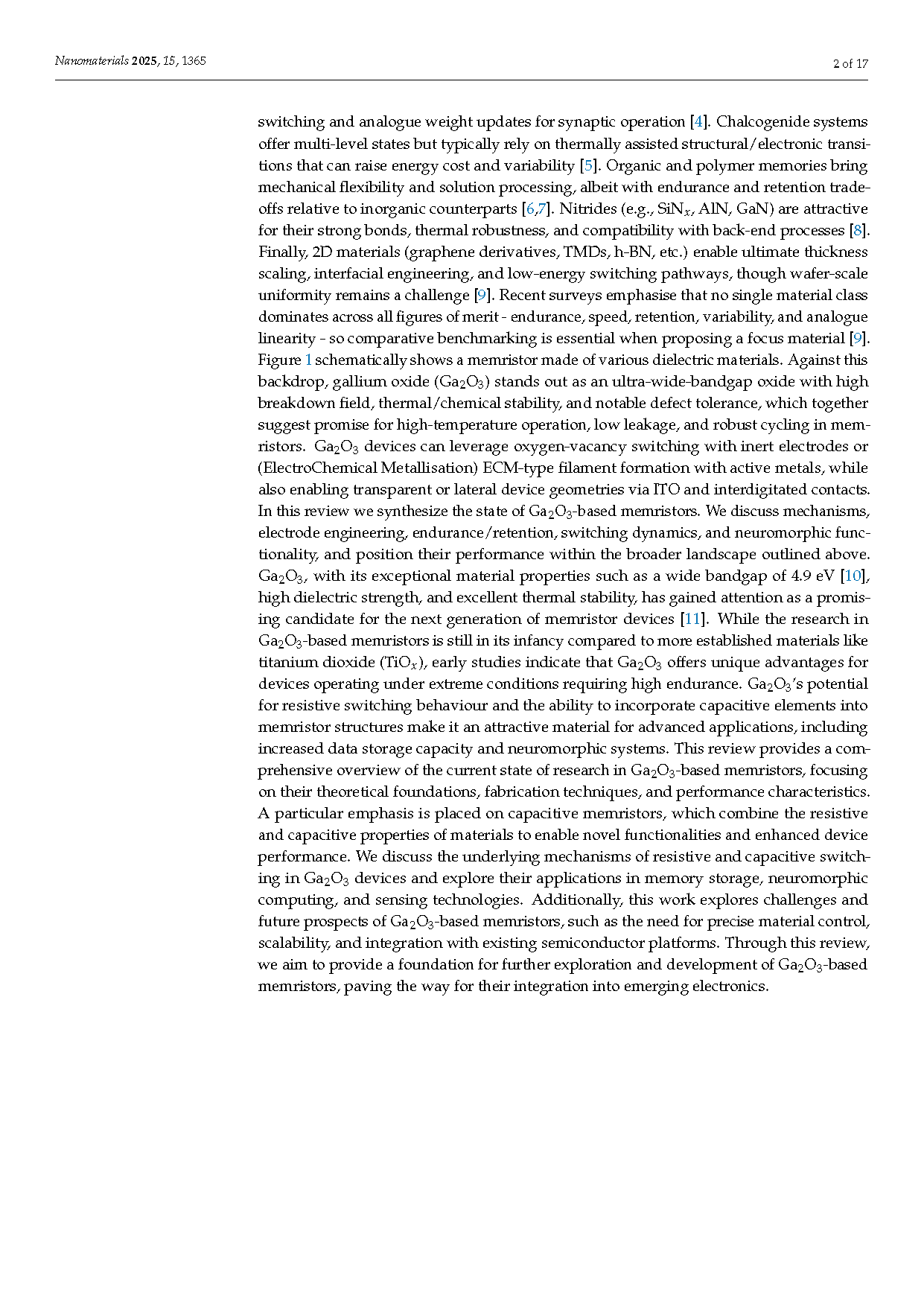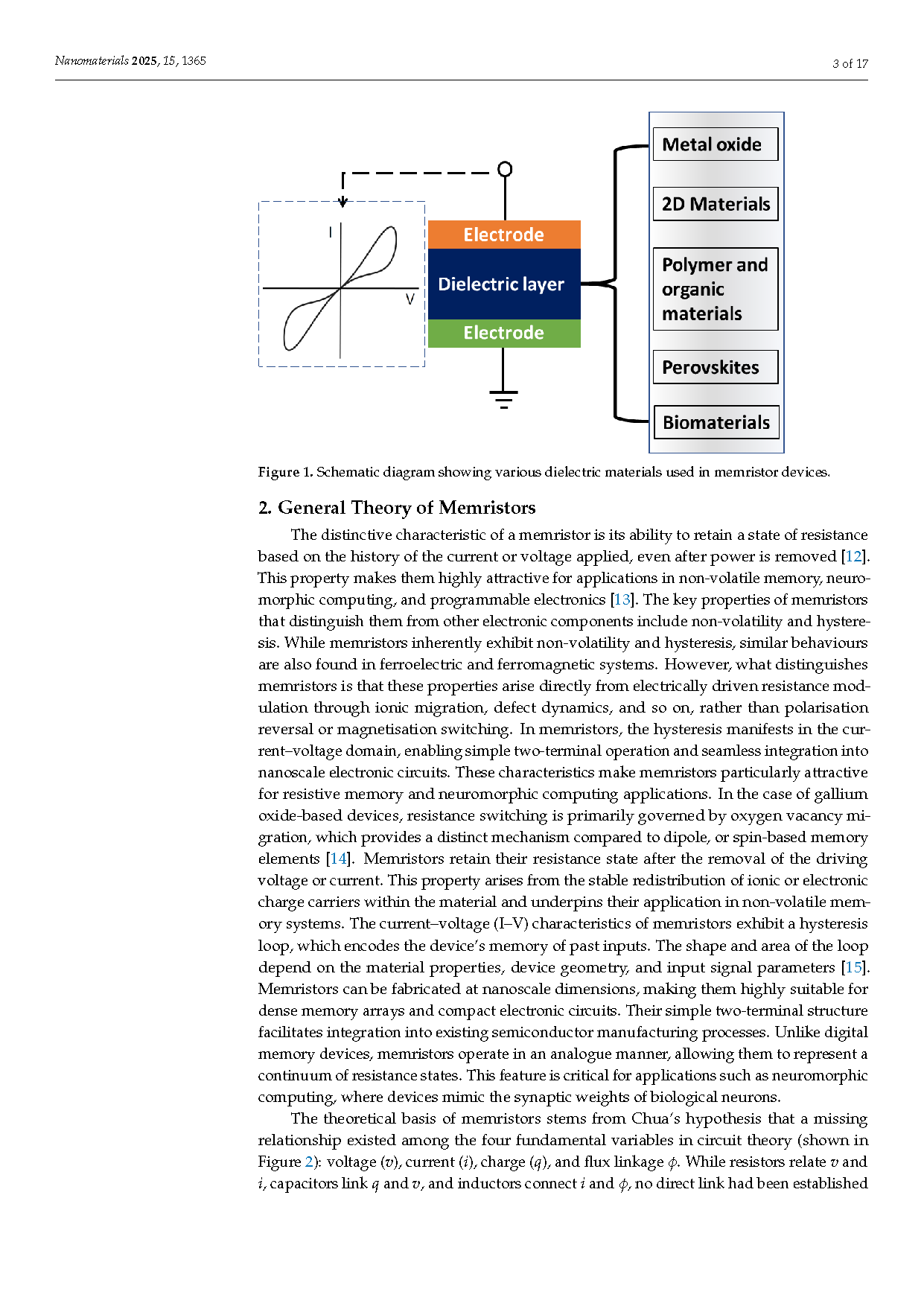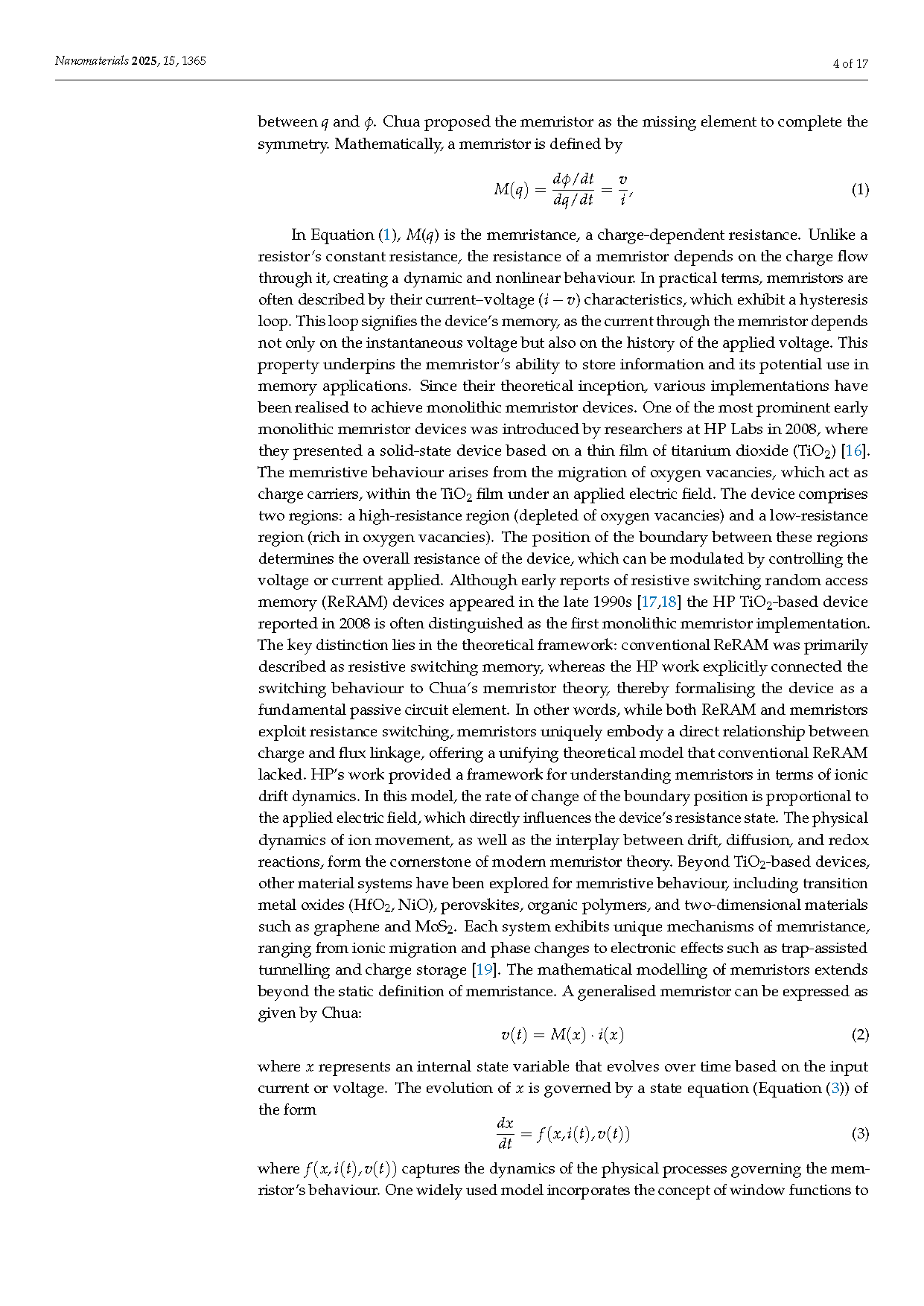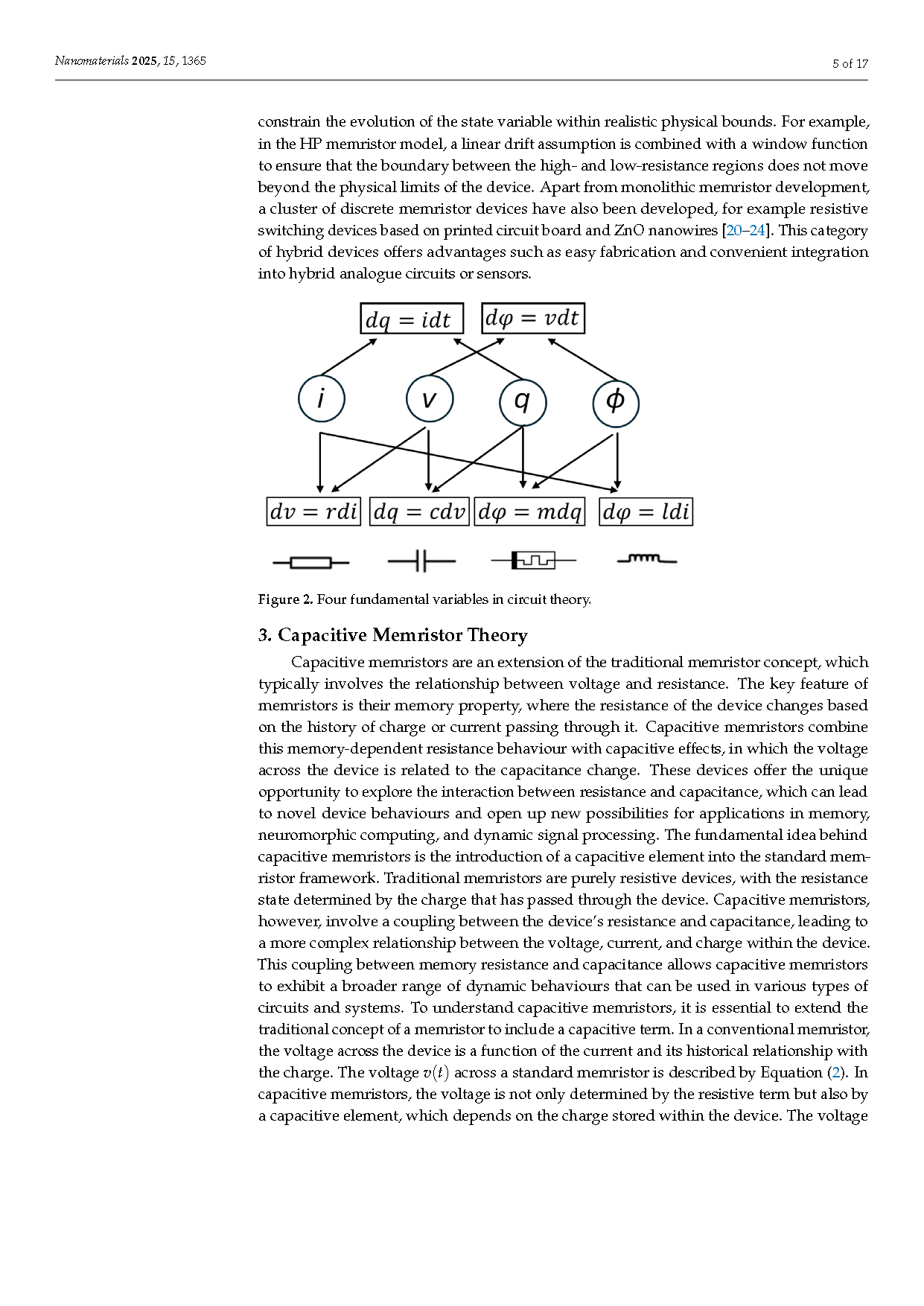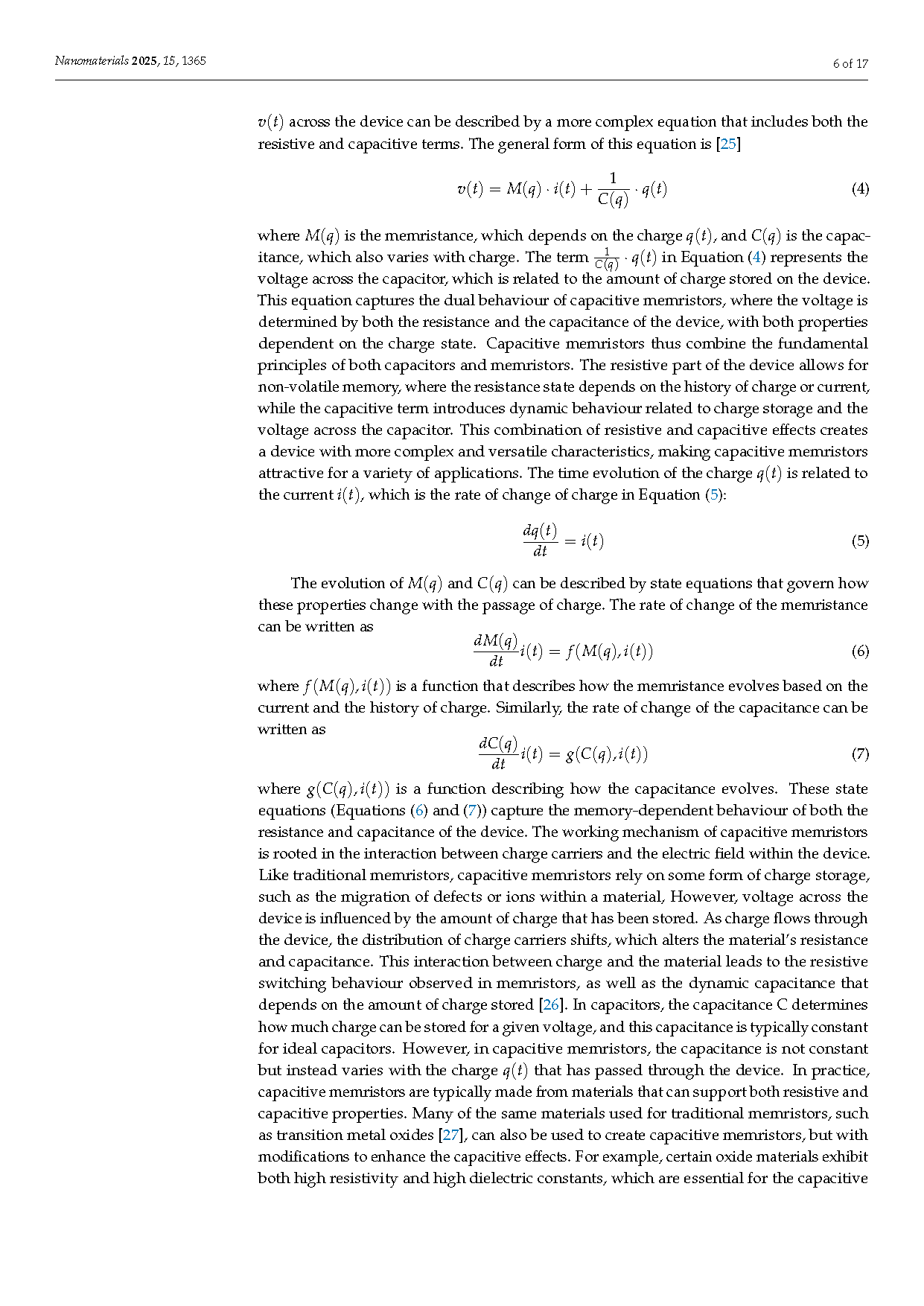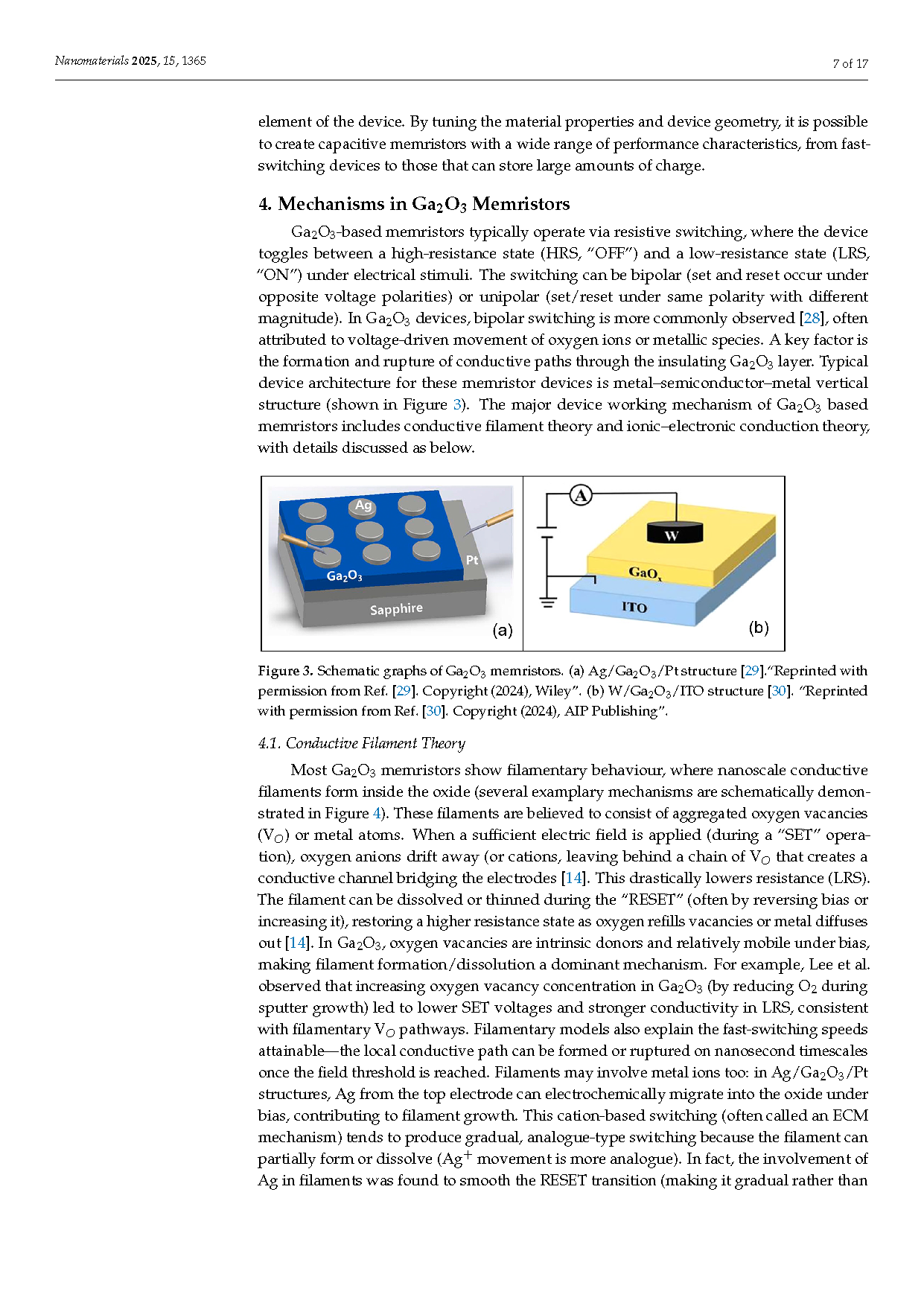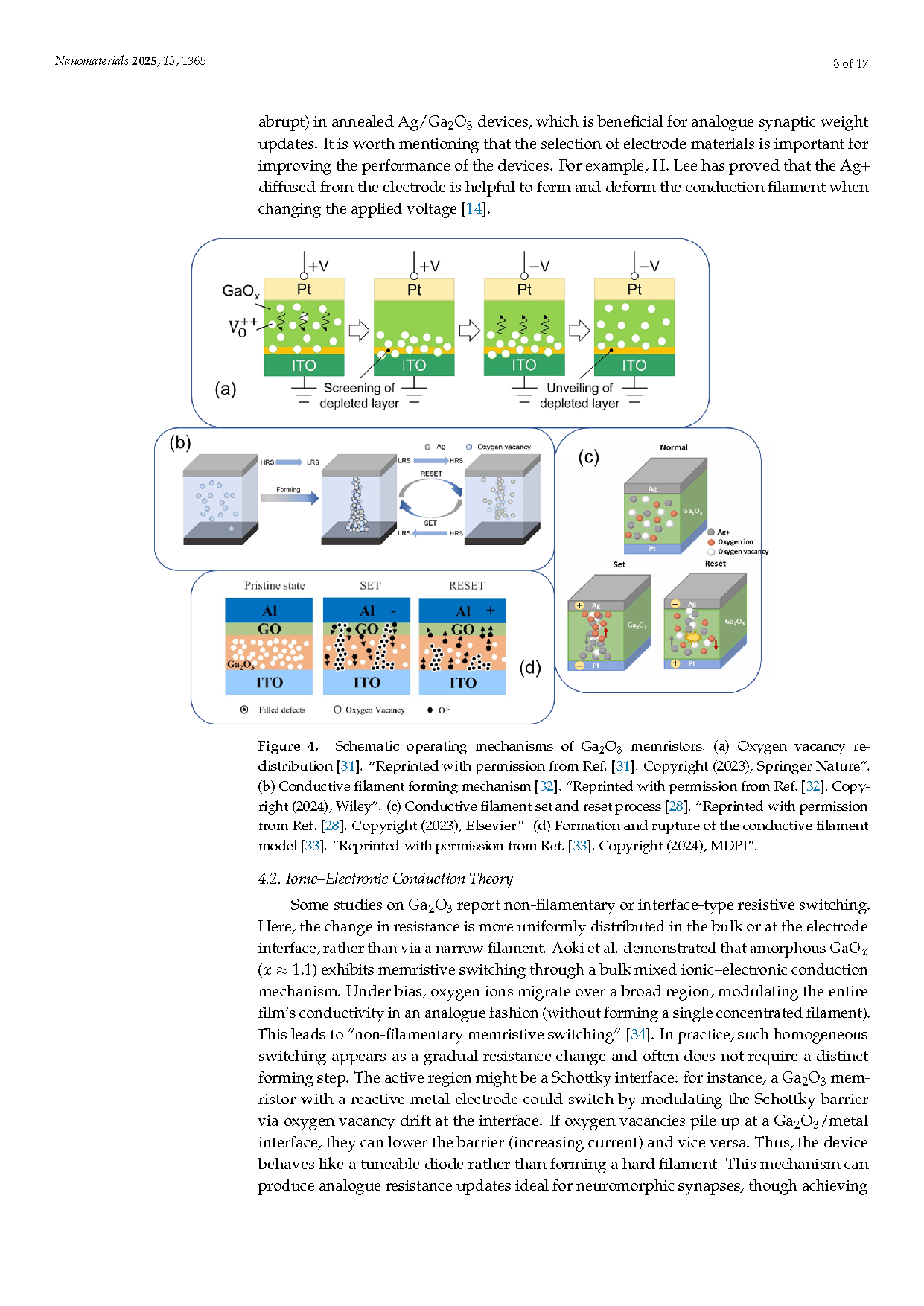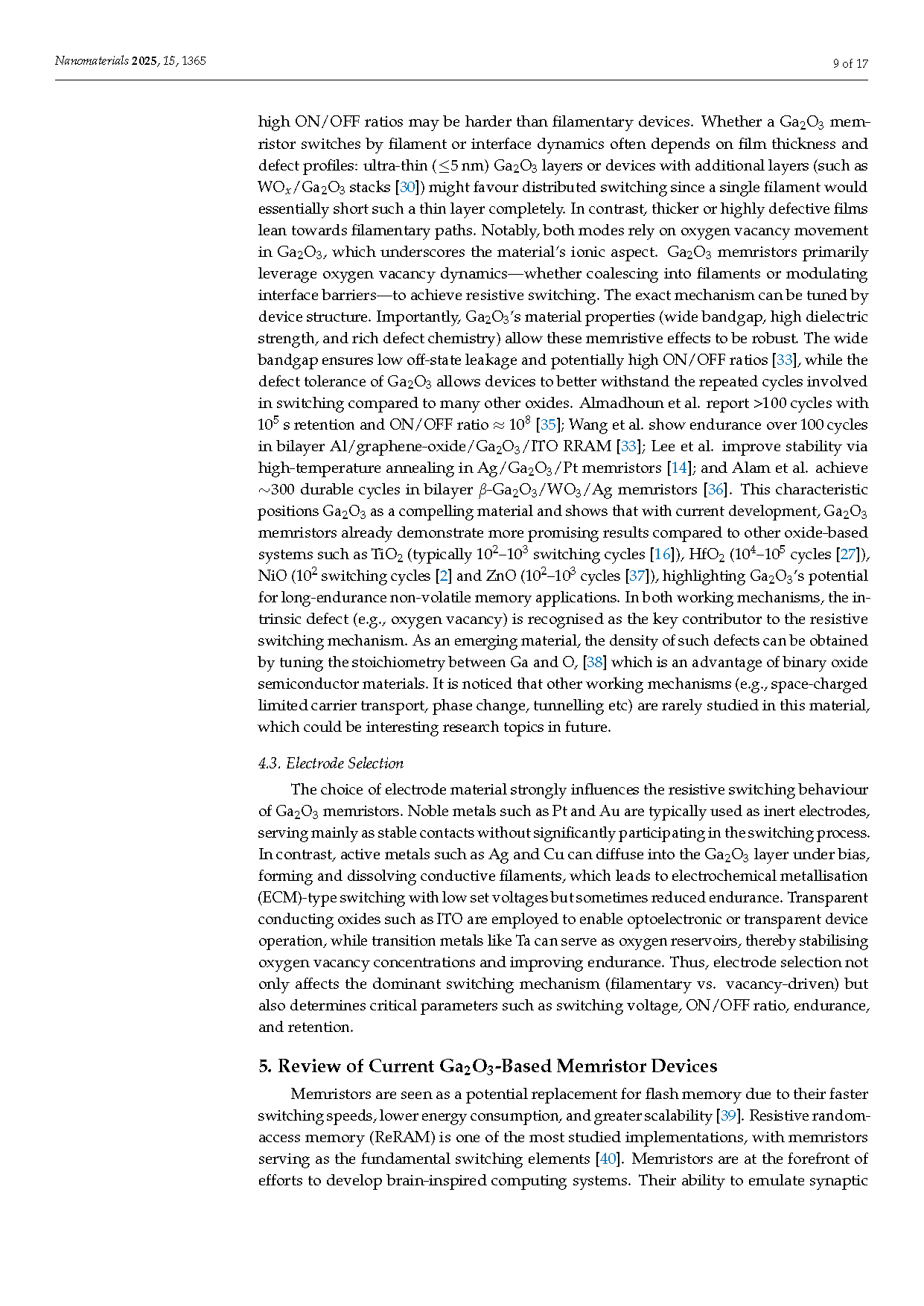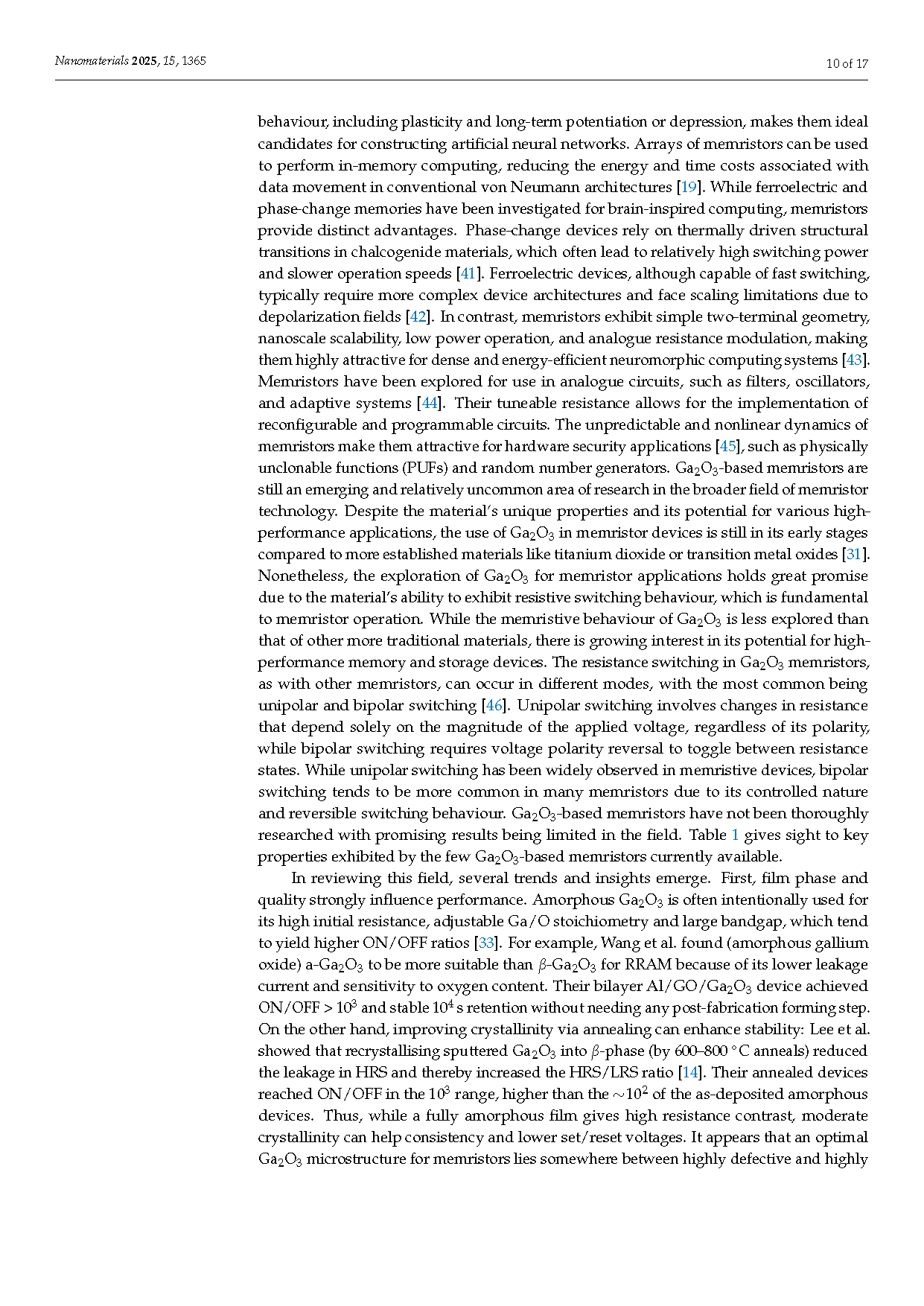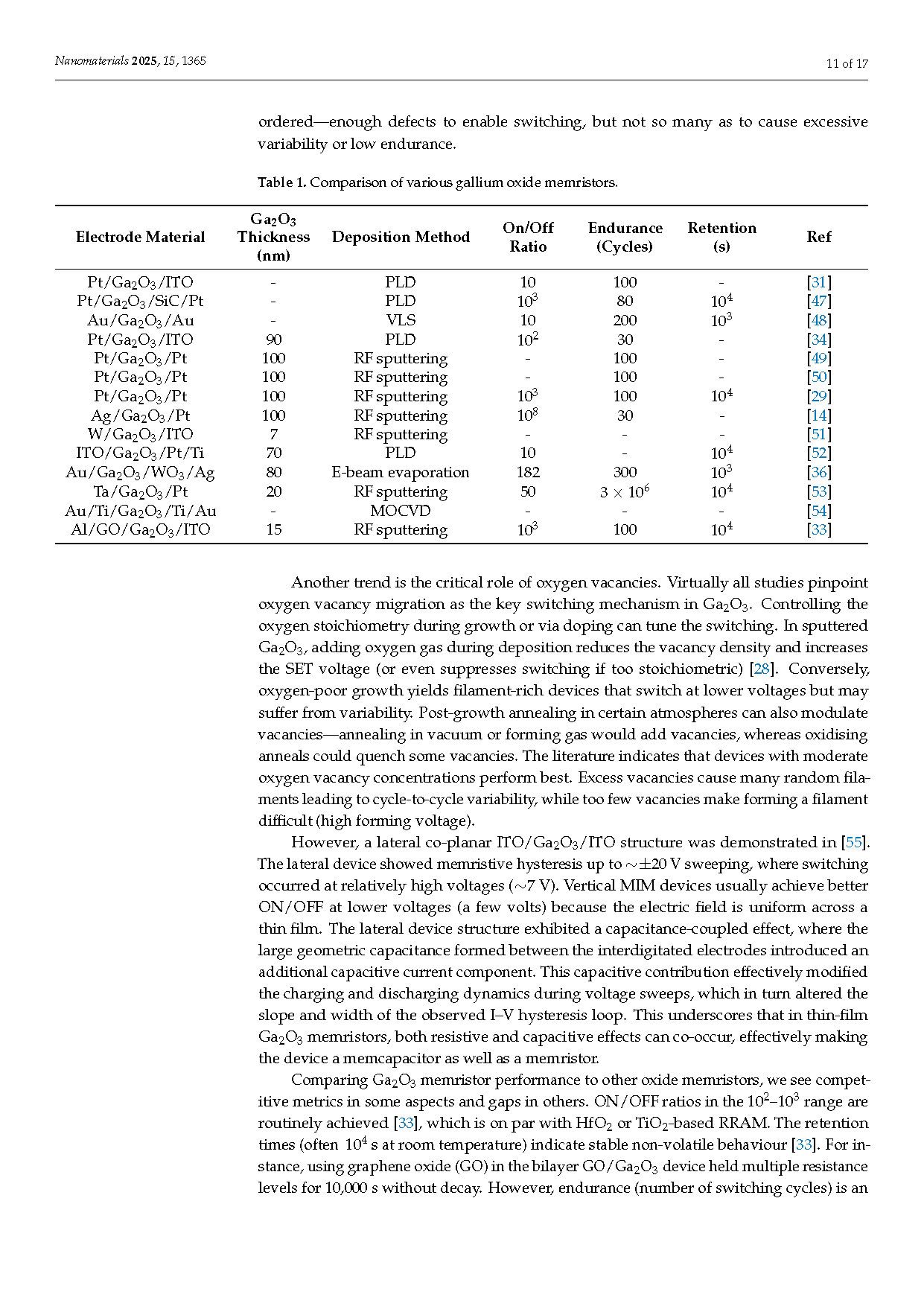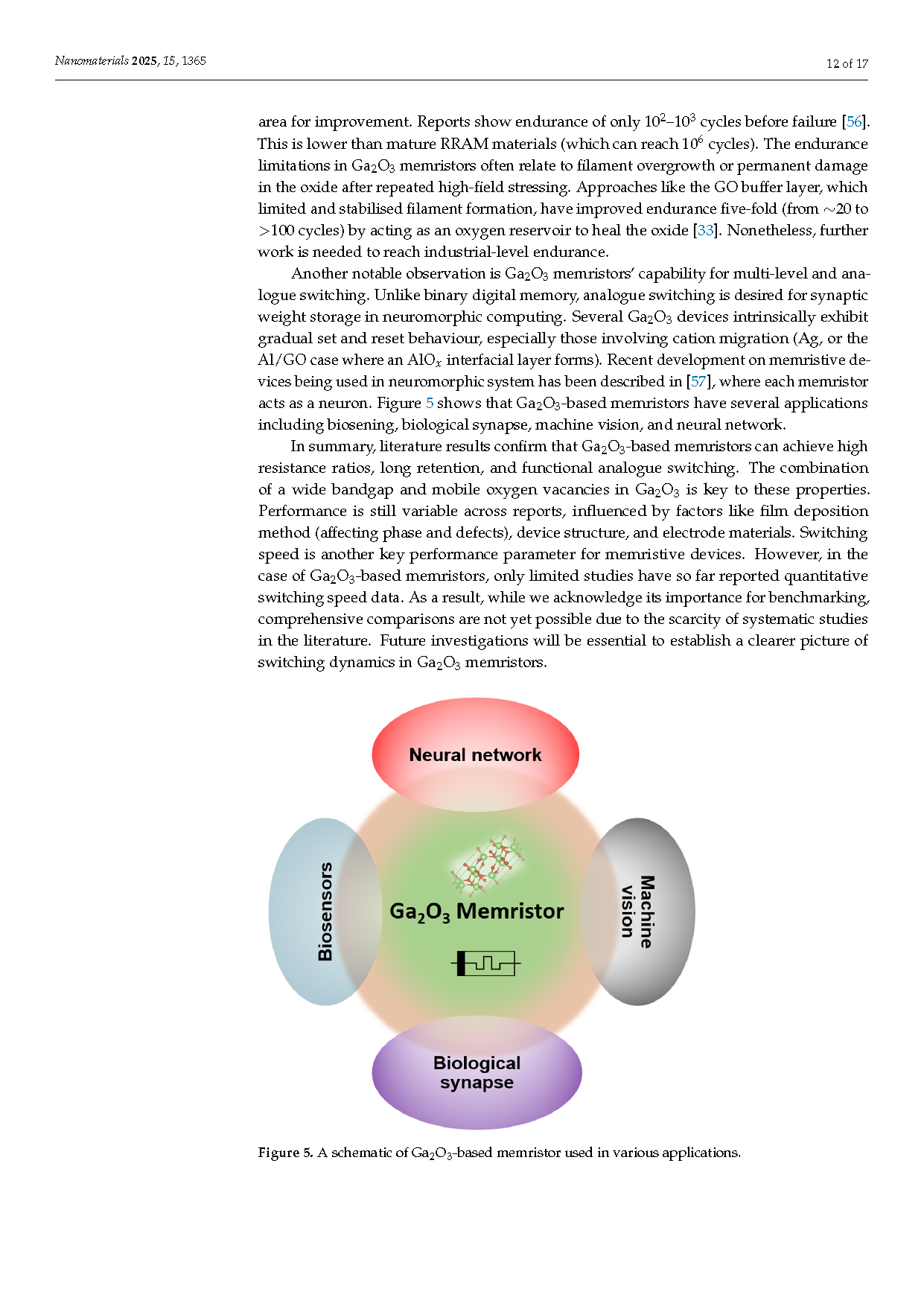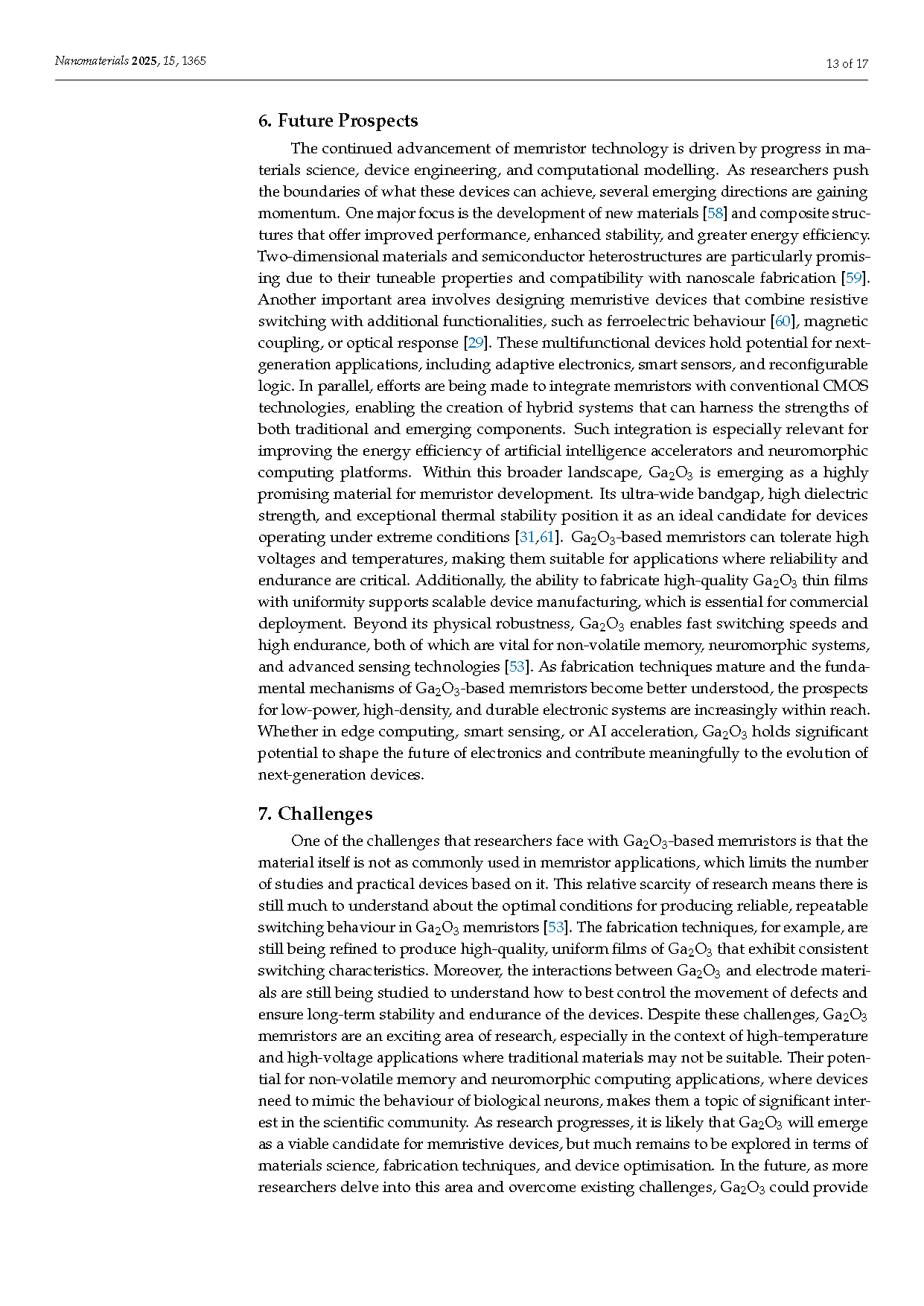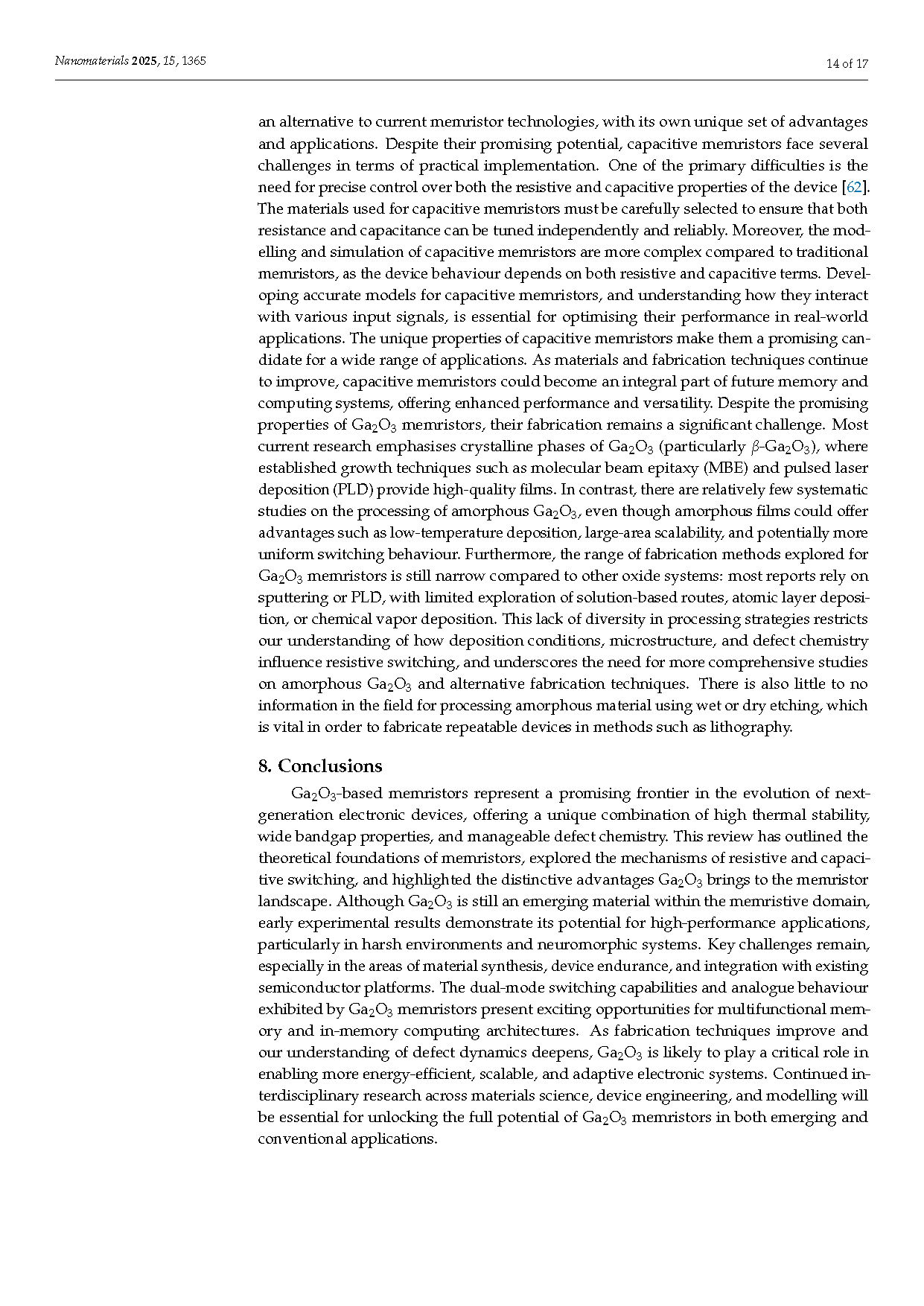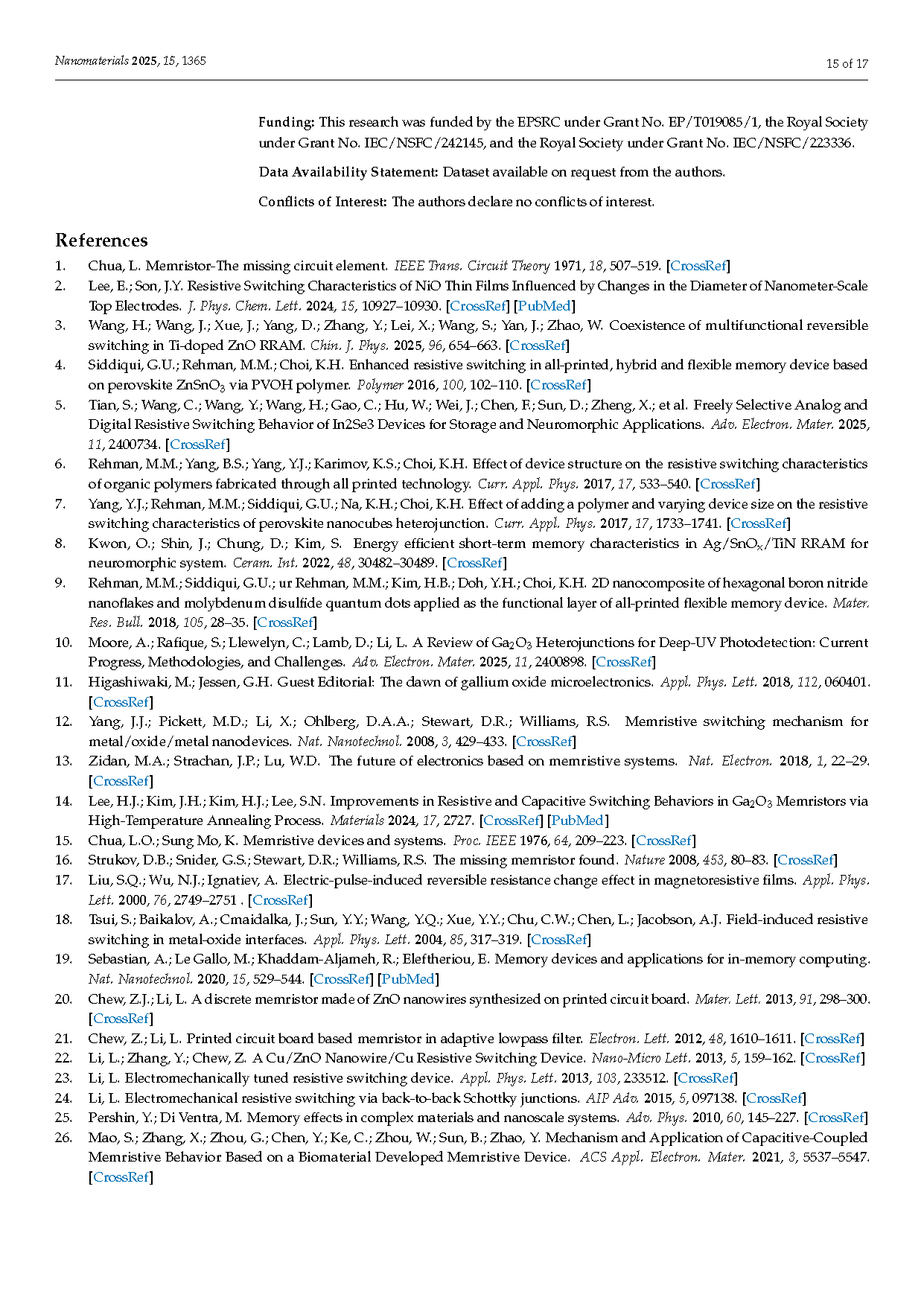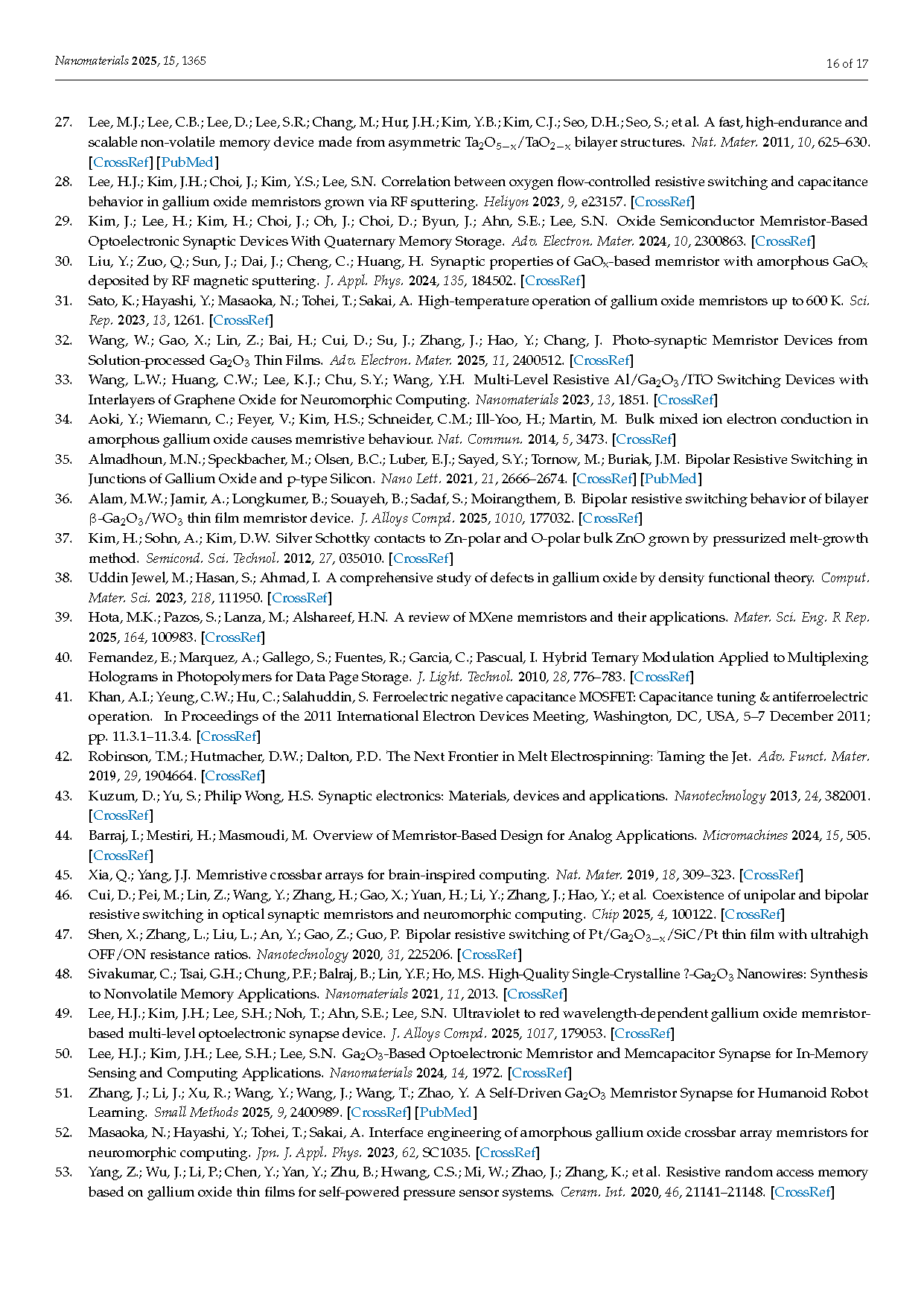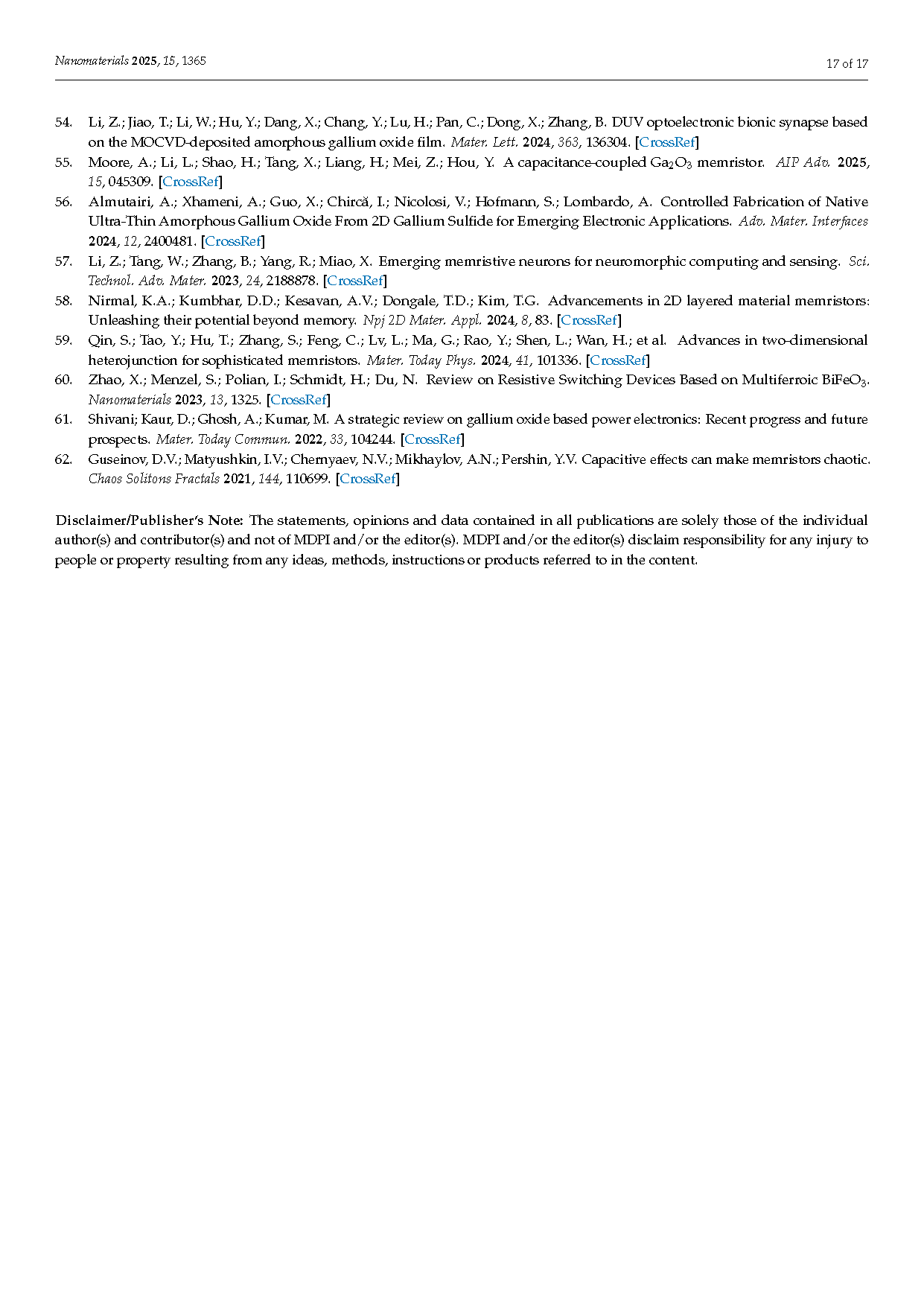
【International Papers】Gallium Oxide Memristors: A Review of Resistive Switching Devices and Emerging Applications
日期:2025-09-23阅读:74
Researchers from the Swansea University have published a dissertation titled "Gallium Oxide Memristors: A Review of Resistive Switching Devices and Emerging Applications" in Nanomaterials.
Background
The continuous evolution of electronic devices has created a strong demand for novel materials and architectures that can deliver higher performance, scalability, and energy efficiency. Within this context, memristors have emerged as a promising technology due to their unique capability to integrate memory and computation within a single nanoscale device. Since their theoretical proposal in 1971, memristors have advanced toward practical applications in non-volatile memory, neuromorphic computing, and adaptive circuits. A wide range of material systems has been explored, including binary oxides (TiO₂, HfO₂, NiO), perovskite oxides, chalcogenides, organic/polymeric systems, nitrides, and 2D materials, each offering distinct advantages. However, no single material class has proven dominant across all critical performance metrics—such as endurance, speed, retention, variability, and analogue linearity—highlighting the importance of identifying new materials with unique strengths. Against this backdrop, gallium oxide (Ga₂O₃) has gained attention as a promising candidate for memristor applications due to its ultra-wide bandgap (4.9 eV), high breakdown field, excellent thermal and chemical stability, and notable defect tolerance. These properties make Ga₂O₃ devices well-suited for operation under extreme conditions, offering low leakage, high endurance, and reliable switching. Moreover, Ga₂O₃ can support both oxygen-vacancy-driven and electrochemical metallization-type switching mechanisms, while also enabling transparent or lateral device geometries. Importantly, Ga₂O₃-based memristors hold the potential to combine resistive and capacitive switching characteristics, enabling multifunctional performance for advanced applications such as high-density data storage and neuromorphic computing.
Abstract
Gallium oxide (Ga2O3)-based memristors are gaining traction as promising candidates for next-generation electronic devices toward in-memory computing, leveraging the unique properties of Ga2O3, such as its wide bandgap, high thermodynamic stability, and chemical stability. This review explores the evolution of memristor theory for Ga2O3-based materials, emphasising capacitive memristors and their ability to integrate resistive and capacitive switching mechanisms for multifunctional performance. We discussed the state-of-the-art fabrication methods, material engineering strategies, and the current challenges of Ga2O3-based memristors. The review also highlights the applications of these memristors in memory technologies, neuromorphic computing, and sensors, showcasing their potential to revolutionise emerging electronics. Special focus has been placed on the use of Ga2O3 in capacitive memristors, where their properties enable improved switching speed, endurance, and stability. In this paper we provide a comprehensive overview of the advancements in Ga2O3-based memristors and outline pathways for future research in this rapidly evolving field.
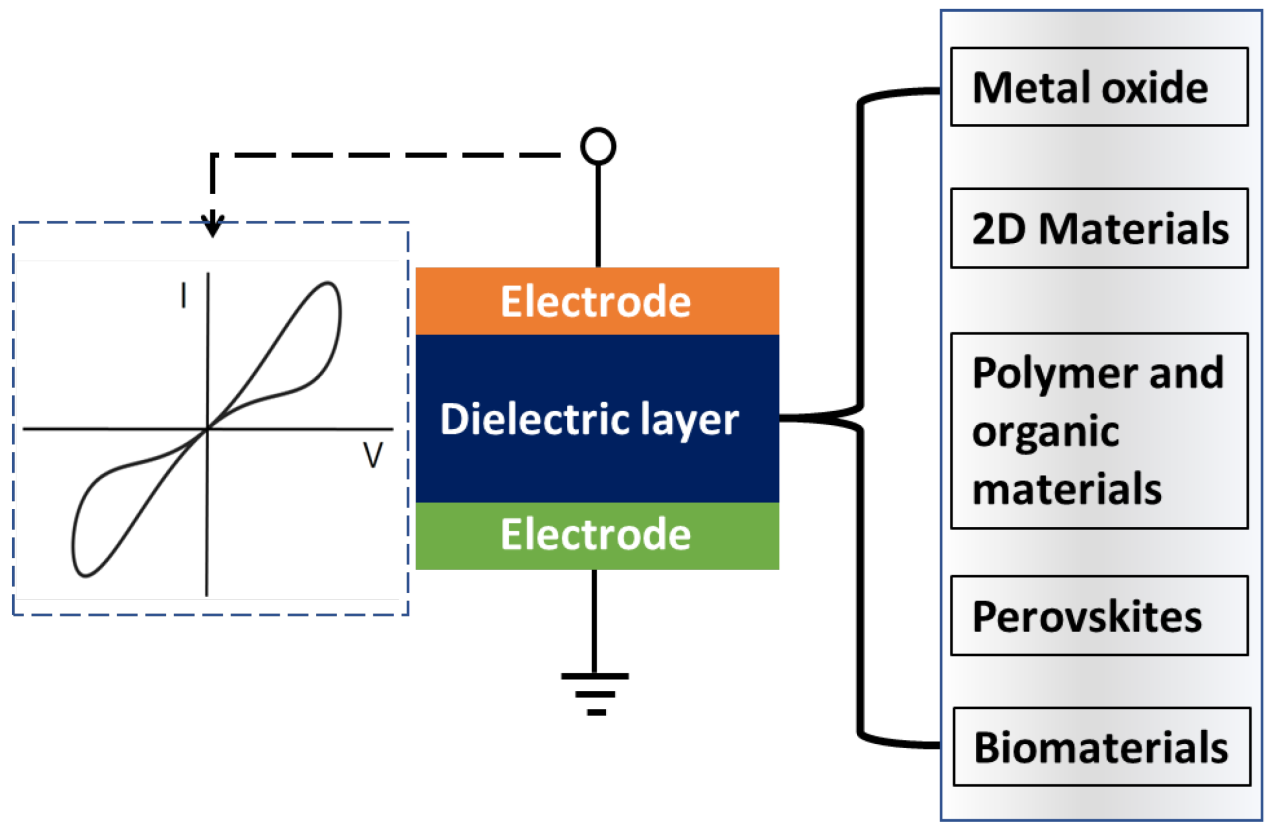
Figure 1. Schematic diagram showing various dielectric materials used in memristor devices.
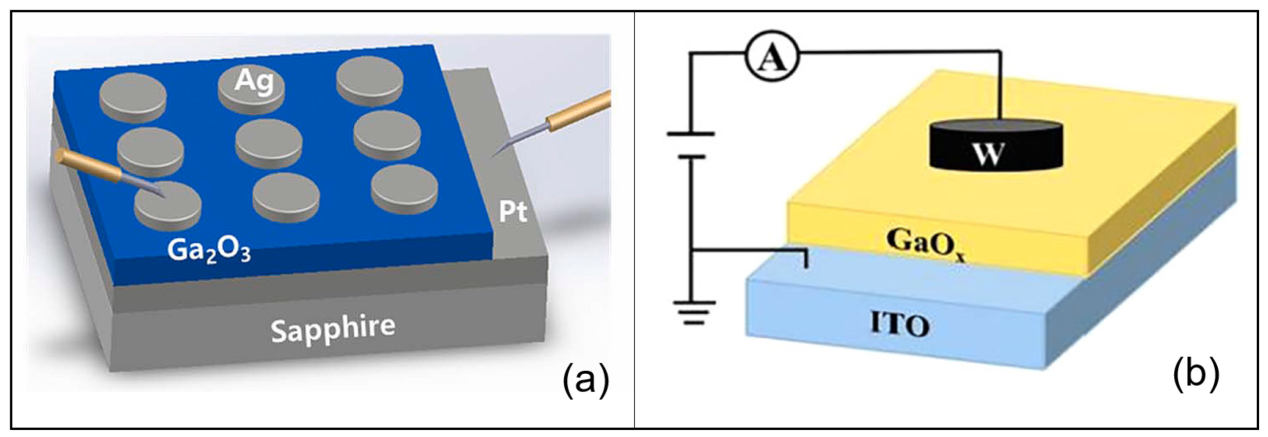
Figure 2. Schematic graphs of Ga2O3 memristors. (a) Ag/Ga2O3/Pt structure. (b) W/Ga2O3/ITO structure.
DOI:
doi.org/10.3390/nano15171365
